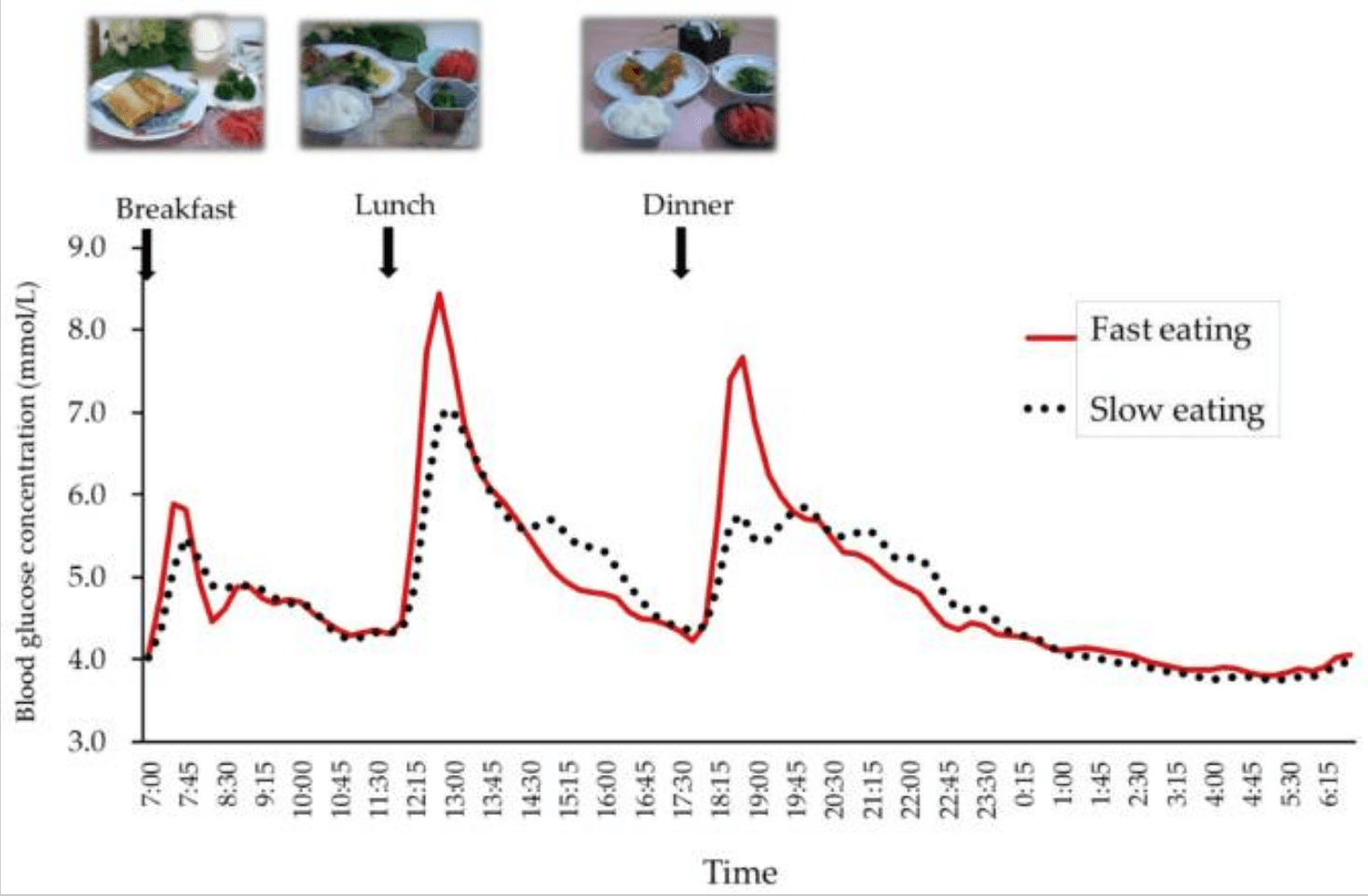Could something as simple as slowing down at mealtime help prevent or manage type 2 diabetes? Emerging research suggests that eating slowly—taking at least 20 minutes per meal and chewing thoroughly—can make a real difference. It’s not just about savoring your food; it’s about giving your body time to signal fullness, reduce overeating, and stabilize blood sugar. Let’s explore what science says about this practical, no-cost strategy.
Eating Slowly to Improve Diabetes
For people with type 2 diabetes, eating slowly can help control weight and improve blood sugar levels. A large study of nearly 60,000 Japanese adults with type 2 diabetes found that those who ate slowly were 42% less likely to be obese compared to fast eaters. They also had slightly lower BMI and waist circumference, suggesting that pacing meals can keep weight in check—a key factor in diabetes management ([Hurst & Fukuda, 2018](https://doi.org/10.1136/bmjopen-2017-019589)). Another study in China with over 1,000 adults showed that faster eating was linked to a 29% higher odds of having type 2 diabetes, highlighting how speed impacts disease risk ([Lu et al., 2023](https://doi.org/10.3389/fnut.2023.1205780)).
Eat Slowly to Prevent Diabetes
Even for those without diabetes, eating slowly may lower the risk of developing the condition. A study following over 197,000 Japanese adults found that fast eaters were more likely to develop diabetes over three years, with higher BMI and weight fluctuations playing a role. Slow eating stood out as a protective habit, suggesting it could be a simple way to reduce diabetes risk ([Kudo et al., 2019](https://pmc.ncbi.nlm.nih.gov/articles/PMC6547735/)). Similarly, a seven-year study of 2,050 Japanese men showed that fast eaters had nearly double the risk of diabetes compared to slow eaters, with obesity partly explaining the link ([Sakurai et al., 2012](https://pubmed.ncbi.nlm.nih.gov/22560127/)).
Why Eating Slowly Works
Why does eating slowly work? It gives your body time to release satiety hormones like PYY and GLP-1, which tell your brain you’re full, helping you eat less. A comprehensive review of 22 studies confirmed that slower eating reduces calorie intake, regardless of how the pace is slowed—whether by smaller bites or longer pauses ([Robinson et al., 2014](https://www.sciencedirect.com/science/article/pii/S0002916523046816)). For blood sugar control, the benefits are clear even in healthy people. A small trial with 19 healthy women showed that eating meals over 20 minutes (vs. 10 minutes) cut blood sugar spikes significantly, with lower glucose peaks after breakfast, lunch, and dinner ([Saito et al., 2020](https://pmc.ncbi.nlm.nih.gov/articles/PMC7551722/)).Check out the Figure I have included from this study.

The Takeaway: Eat Slowly
The takeaway? Slowing down at meals—aiming for at least 20 minutes and chewing thoroughly—can help you eat less, manage weight, and stabilize blood sugar, whether you’re living with type 2 diabetes or trying to prevent it. Try putting your fork down between bites, savoring each flavor, or eating smaller portions to stretch out mealtime. While more research is needed to confirm long-term benefits, this simple habit is a promising tool for better health. So next time you sit down to eat, take your time—it might just make a big difference.

